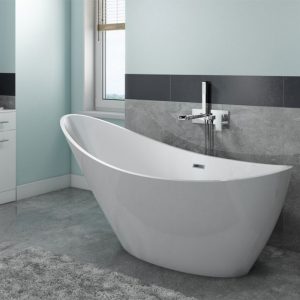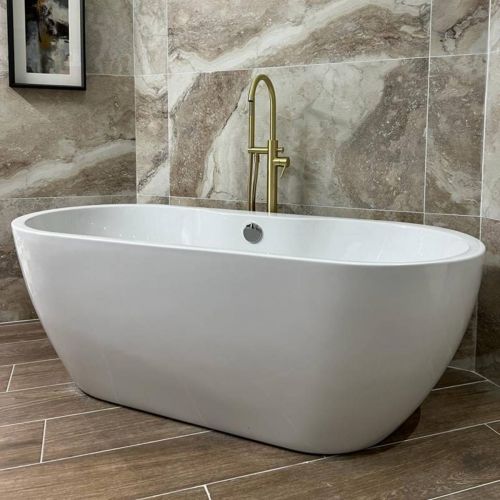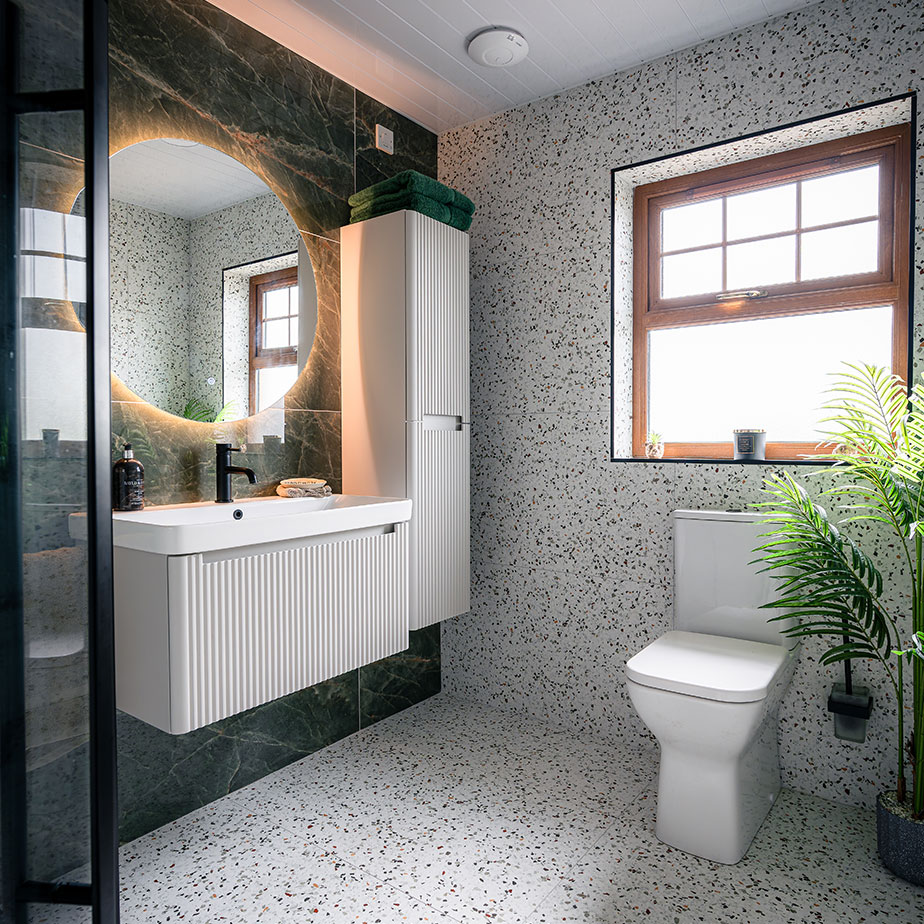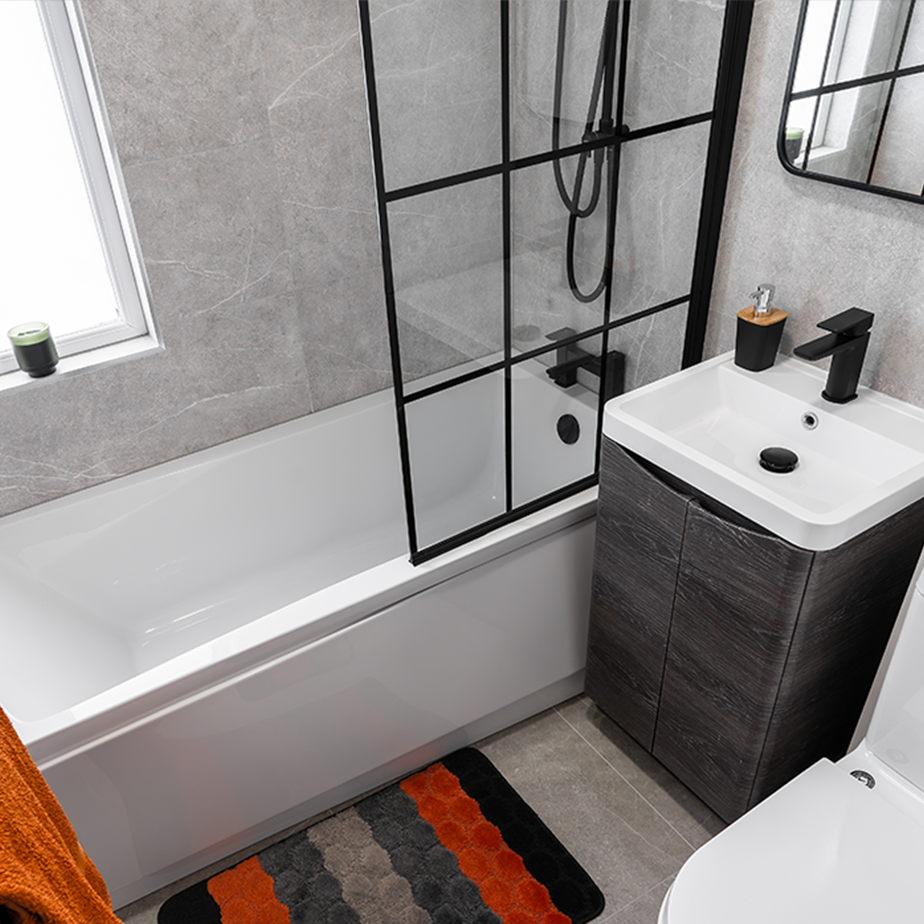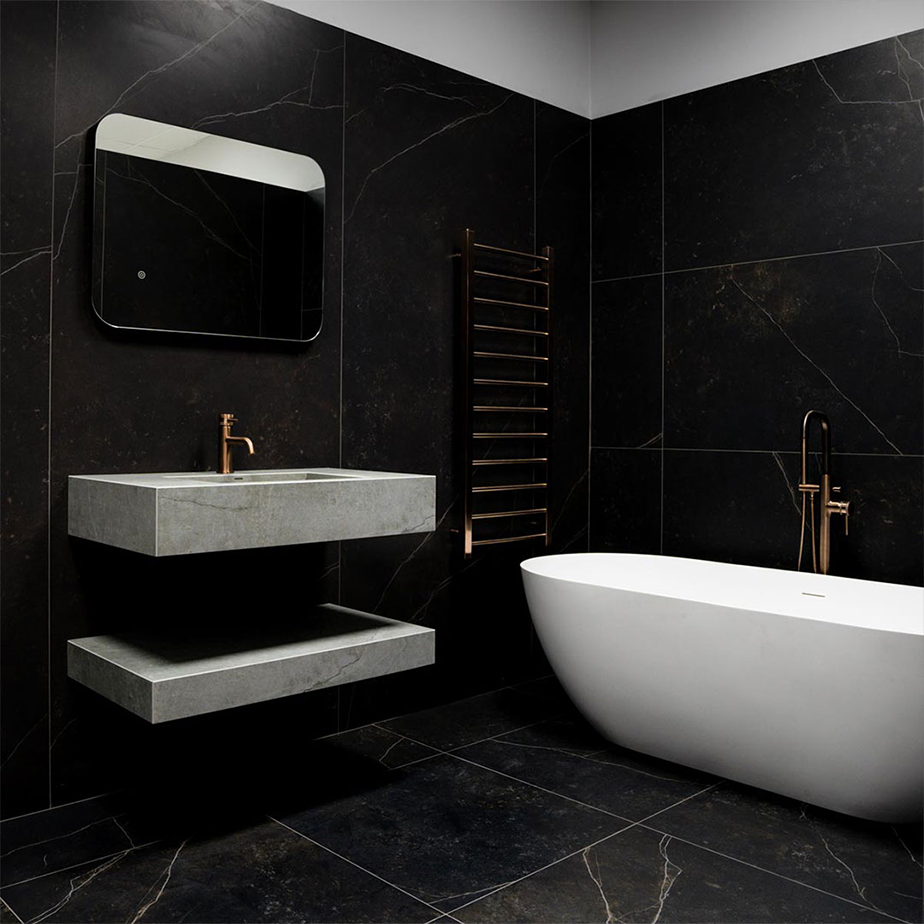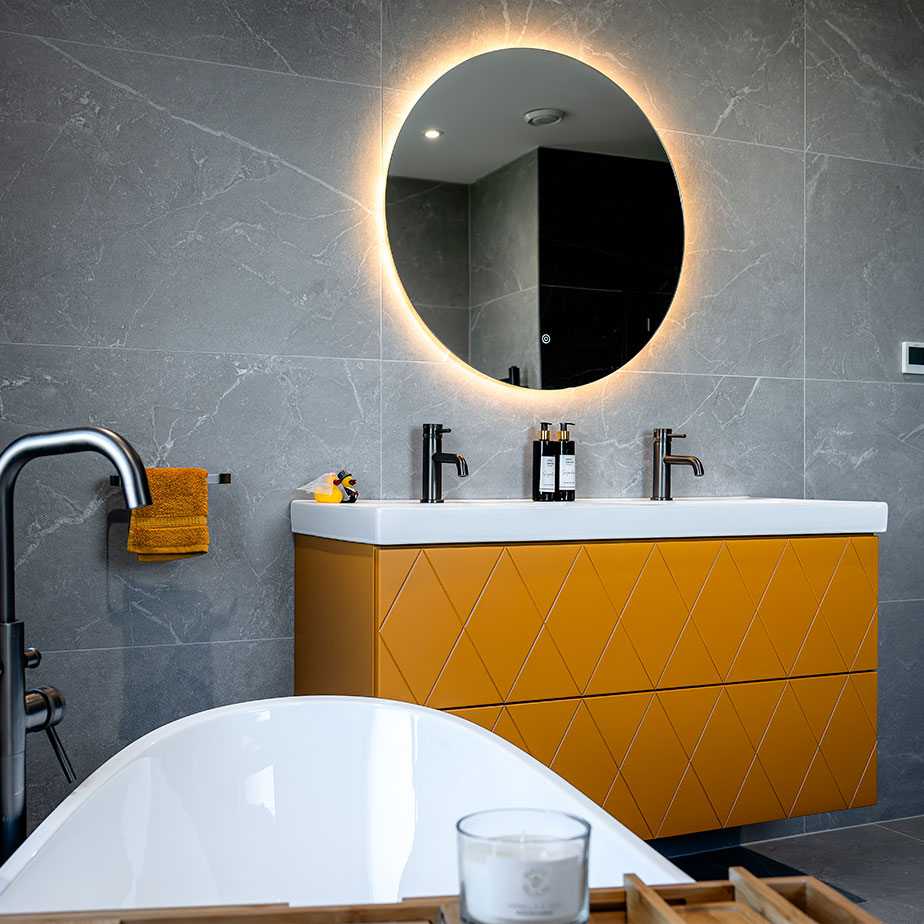How to: Fit a Freestanding Bath
How to Fit a Freestanding Bath: Freestanding baths aren’t just functional , they’re beautiful statement pieces that can transform your entire bathroom. Fitting one is easier than you think! Our step-by-step guide walks you through everything, from adjusting the feet for a perfect level finish, to fitting the mixer taps and connecting the waste. Whether you're opting for a traditional roll-top or a sleek modern style, follow our simple tips to install your new bath with confidence. Explore our full range of freestanding baths and expert advice at Bathshack.
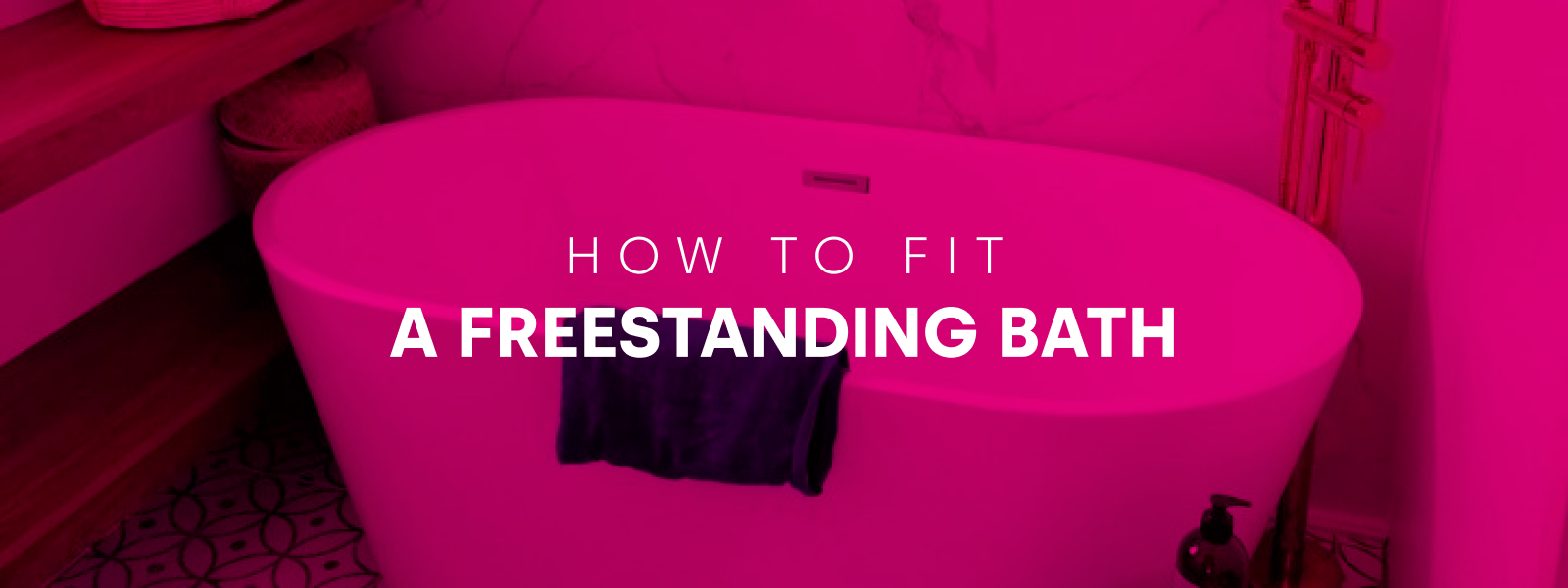
How to Fit a Freestanding Bath
Freestanding baths aren’t just functional elements of your bathroom. They’re features in their own right. Many are visually stunning and enhance the character of the ENTIRE room. But how do you fit a freestanding bath? That’s the question we answer in this in-depth guide.
Main Components of a Freestanding Bath
Freestanding bath vendors will usually supply freestanding baths with all the kit you need to install them. Unlike fitted baths, you can place freestanding baths wherever you like in your bathroom, so long as you already have the supporting plumbing in place.
Most freestanding baths kits will supply the following components:
-
Bathtub (the main unit of the bath).
-
Bath surround panel (if applicable)
-
Panel brackets (to hold the bath surround in place)
-
Feet assembly (if your freestanding bath has feet that connect to the main body of the tub)
Filling methods:
-
Conventional dual faucet
-
Deck-mounted faucet (focus of this guide)
-
Wall-mounted shower valve with spout waste assembly
This guide refers to the second of these methods, however, material differences between the first two are small.
Tools For Fitting A Freestanding Bath
| Tool | Purpose |
|---|---|
| Silicone / Plumber’s Putty | Seal fixtures and drains |
| Caulk & Damp Cloth | Seal edges and clean excess |
| Spirit Level & Tape Measure | Level and position the bath |
| Blanket | Protect bath & floor during fitting |
| Electric Screwdriver | Install screws quickly |
| 32mm Tank Cutter | Cut holes for plumbing connections |
| Wooden Blocks | Support bath during installation |
How to Fit a Freestanding Bath (Step-by-Step) Guide
Step 1: Prepare the Area for Bath Fitting
Before you install a freestanding bath, you’ll need to ensure that you can accommodate it. Here’s what you need to check:
-
Confirm the floor is level and strong enough to support the bath (especially upstairs with stone baths)
-
Switch off water supply.
-
Check plumbing is ready (supply pipes and waste pipes in place).
-
Ensure you can physically get the bath into the room.
Step 2: Choose the Right Bathtub Location
One of the joys of a freestanding bath is flexible placement — centre stage or near a wall.
-
Make sure plumbing lines can reach.
-
Allow room for cleaning and maintenance access around the bath.
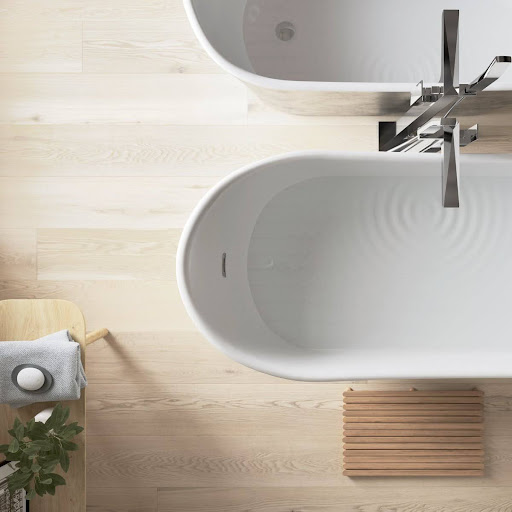
Step 3: Tip The Bath Onto Its Front
Once you’ve decided where you’d like the bath to go, place a blanket on the floor and then tip the bath upside down. Be gentle while doing this to avoid cracking or damaging the bath.
Step 4: Fit The Foot Assembly
Many freestanding baths come with adjustable foot assemblies, which help ensure the bath is perfectly level — even if your bathroom floor isn’t. If your bath doesn’t include feet, you can skip to Step 5.
What is a foot assembly?
A typical foot assembly includes:
-
Leg frame
-
Foot bolt
-
Rubberised foot pad
-
Locking nut
The foot bolt screws into the leg frame, and the rubber foot makes contact with the floor. You adjust the height by screwing or unscrewing the foot bolt. Once level, you lock it in place using the locking nut.
How to fit the feet:
-
Assemble the leg frame and foot bolts as per manufacturer instructions.
-
Lay a blanket on the floor and gently tip the bath onto its front or side to access the underside.
-
Position the leg frame against the bath’s underside.
-
Use the supplied bolts (never substitute with longer ones) to attach the foot assembly securely to the bath.
-
Use an electric screwdriver to insert the bolts into the pre-drilled holes.
-
-
Adjust foot height:
-
Stand the bath upright on a level surface or floor.
-
Place a spirit level across the top edges of the bath.
-
Adjust each foot bolt until the bath is level side to side and front to back.
-
It’s normal not to get it perfect on the first try — small adjustments are easy to make.
-
-
Lock in place: Once level, tighten the locking nuts on each foot to secure your adjustments.
Why is this important? Properly adjusted feet ensure the bath is:
- Stable and secure
- Evenly supported
- Correctly aligned with any bath panel
Only use the bolts supplied by the bath vendor. Longer bolts could damage the bath.
Step 5: Adjust The Feet Height To The Panel
If your bath has a panel surround:
-
The bath height must match the panel’s designed height (e.g. 550 mm).
How to adjust:
-
With the bath still upright, place a tape measure between the floor and the underside of the bath rim.
-
Adjust each foot so the bath height matches the manufacturer’s specified panel height.
-
Double-check level using the spirit level after adjusting the feet.
-
Tighten all locking nuts once correct.
Tip: Matching bath height to the panel ensures a seamless visual fit and proper panel alignment later.
Step 6: Fit Sprung Clips To Bath Rebate
Freestanding baths typically feature a rebate - a curved section that forms a lip around the top of the bath. Bath surrounds fit into this section, held in place by sprung clips.
With the bath upturned, scan it for wooden blocks. Fit sprung clips to these blocks following the manufacturer’s instructions.
Step 7: Place The Panel In Its Final Position And Mark The Floor For The Panel Fixing Brackets
The next part of the process is to place the panel in its final position and mark the floor for the panel fixing brackets. In addition, make sure that any plumbing fixtures do not conflict with the panel hardware.
Step 8: Fix Panel Brackets To The Floor
Move the panel out of the way and fit the brackets to the floor using a screwdriver, ensuring that they are in the correct position.
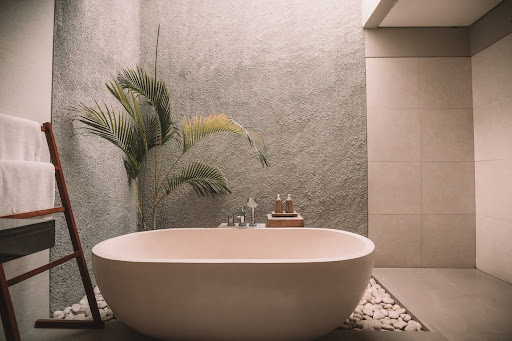
Now it’s time to install the mixer taps that will fill your freestanding bath.
Step 9: Fit The Mixer On The Waste
Place the bath on wooden blocks — this raises it off the floor and gives you easy access to:
- The bath’s underside
- The area where the mixer faucet will be fitted
- The plumbing connections
Cutting holes for the mixer:
1. Apply masking tape to the rim of the bath where you’ll drill.
- This helps protect the surface from scratches.
- It also reduces the risk of the drill bit slipping when starting the holes.
2. Using a tape measure, mark the exact centre points for the mixer tails on the bath rim.
- The mixer is usually positioned on the rim either side of the waste outlet, but always double-check your mixer instructions and bath design.
3. Attach a 32mm tank cutter to your electric screwdriver or drill.
4. Carefully drill the holes through the marked points in the bath rim.
-
Go slowly to ensure a clean, precise cut.
Fitting the mixer:
-
Once the holes are drilled, peel back the masking tape around the area so you don’t trap tape under the mixer fittings.
-
Insert the mixer tails through the holes.
-
Secure the mixer to the bath rim using the supplied fittings.
-
Tighten according to the manufacturer’s instructions to ensure a firm, watertight connection.
-
Tip: Before proceeding to plumbing connections in the next step, double-check the mixer is secure, level, and aligned correctly on the bath rim.
Step 10: Fit The Pop-Up Waste And Connect To The Bath Waste
Fit the pop-up waste to the hole in the bathtub and then connect it to the bath waste on the floor.
If you are struggling, you can use a flexible-extension bath trap to move the pipe into the precise position you need.
Step 11: Connect The Supply Pipes To The Mixer
Next, connect the supply pipes to the mixer. Usually, manufacturers will supply flexible copper connectors to make this process easier.
Check that the plumbing is working properly with a wet test. Ensure there are no leaks.
Step 12: Place The Tub In The Panel
Next, disconnect the bathtub from the waste and mixer supply pipes and slot the bath into the panel surround. Then, while raising the entire assembly on wooden beams, reconnect the waste and mixer supply lines.
Remove the wooden blocks and then slide the panel with the bathtub until it slots into the floor brackets. Then apply silicone caulk around the base of the panel and the flooring to keep water out.
Explore Our Wide Range of Freestanding Baths at Bathshack
At Bathshack, we stock an extensive selection of freestanding baths in a variety of styles, sizes, and finishes to suit every type of bathroom — from classic roll-tops to sleek, modern designs. Whether you're renovating a large space or working with a compact ensuite, we have a bath that fits perfectly. Need more advice before making a decision? Check out our blog for expert tips, installation guides, and bathroom inspiration to help you choose with confidence.
Visit: www.bathshack.com
Contact: info@bathshack.com | (028) 9077 0188
FAQs: Fitting a Freestanding Bath
Are freestanding baths easier to install?
Not always. While they don’t require a bath frame or panel, freestanding baths do need precise plumbing and proper floor support, so planning is key
Do you need tiles behind a freestanding bath?
Tiles aren't strictly necessary, but they’re highly recommended—especially if your bath sits near a wall. They protect against splashes and are easier to clean.
Do you need to waterproof the back of the bath?
Yes, especially if the bath is close to a wall. Waterproofing helps protect against moisture damage and mould in hard-to-reach areas.
Can a freestanding bath be up against the wall?
Yes, many freestanding baths are designed to sit close to or flush against a wall. Just make sure there’s enough access for cleaning and plumbing maintenance.
